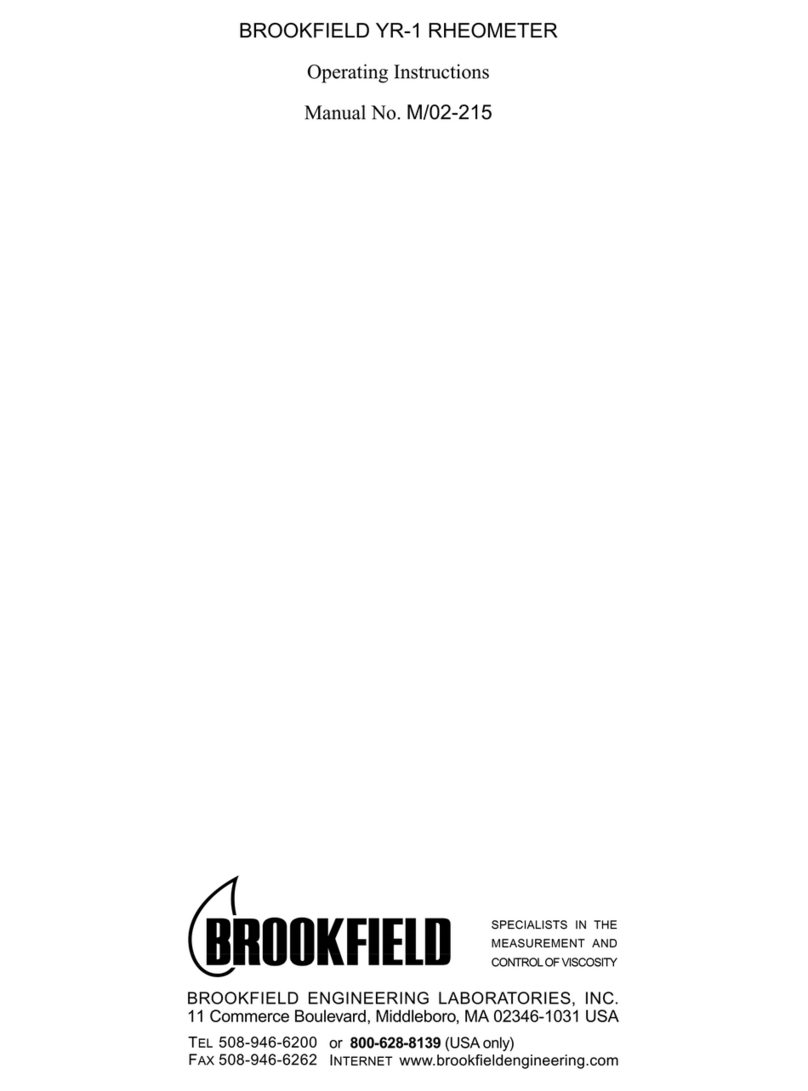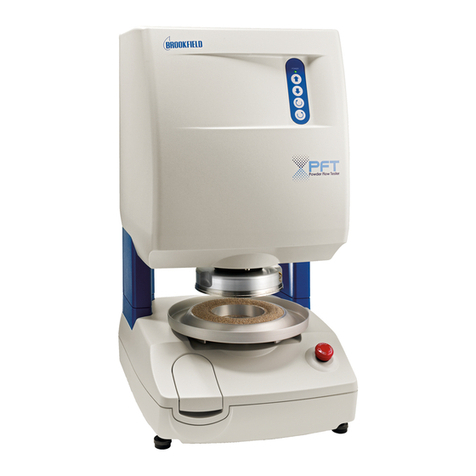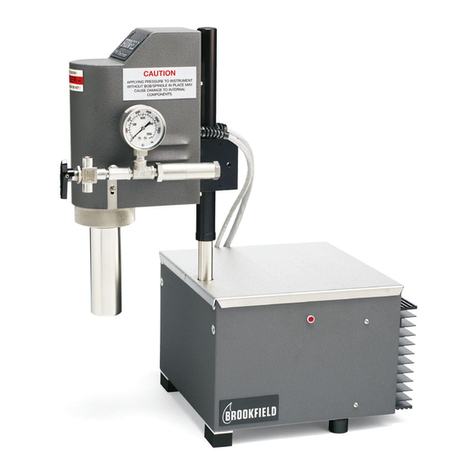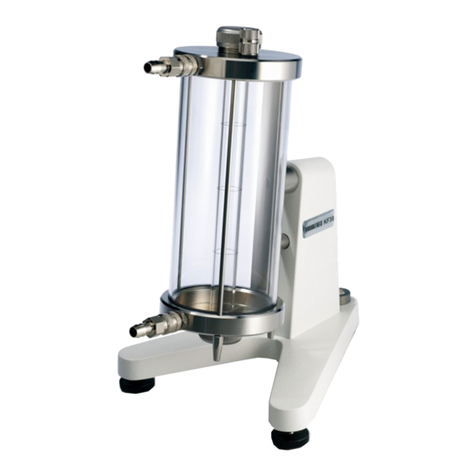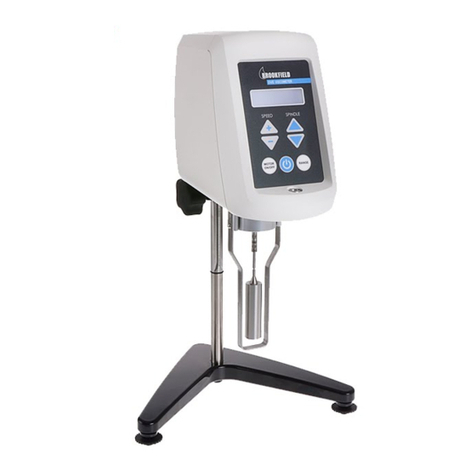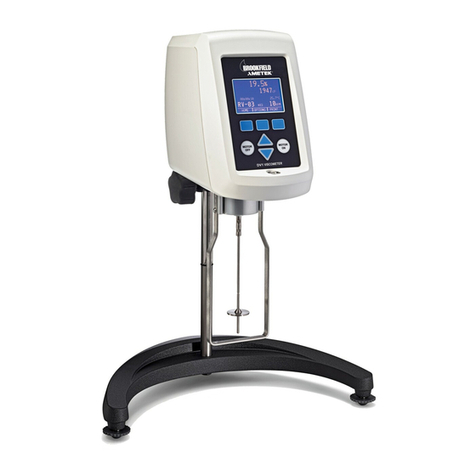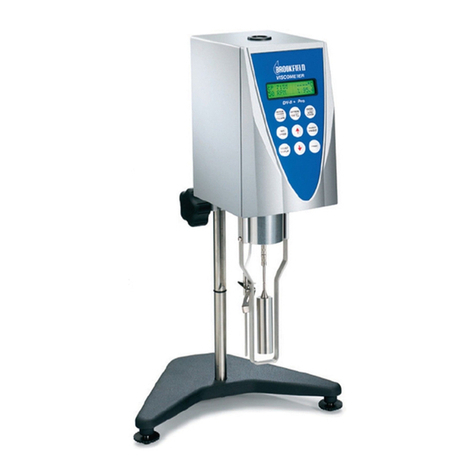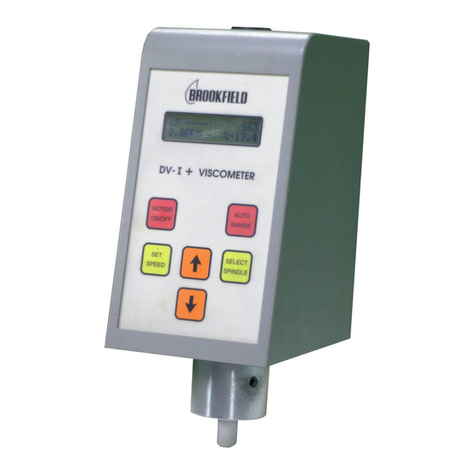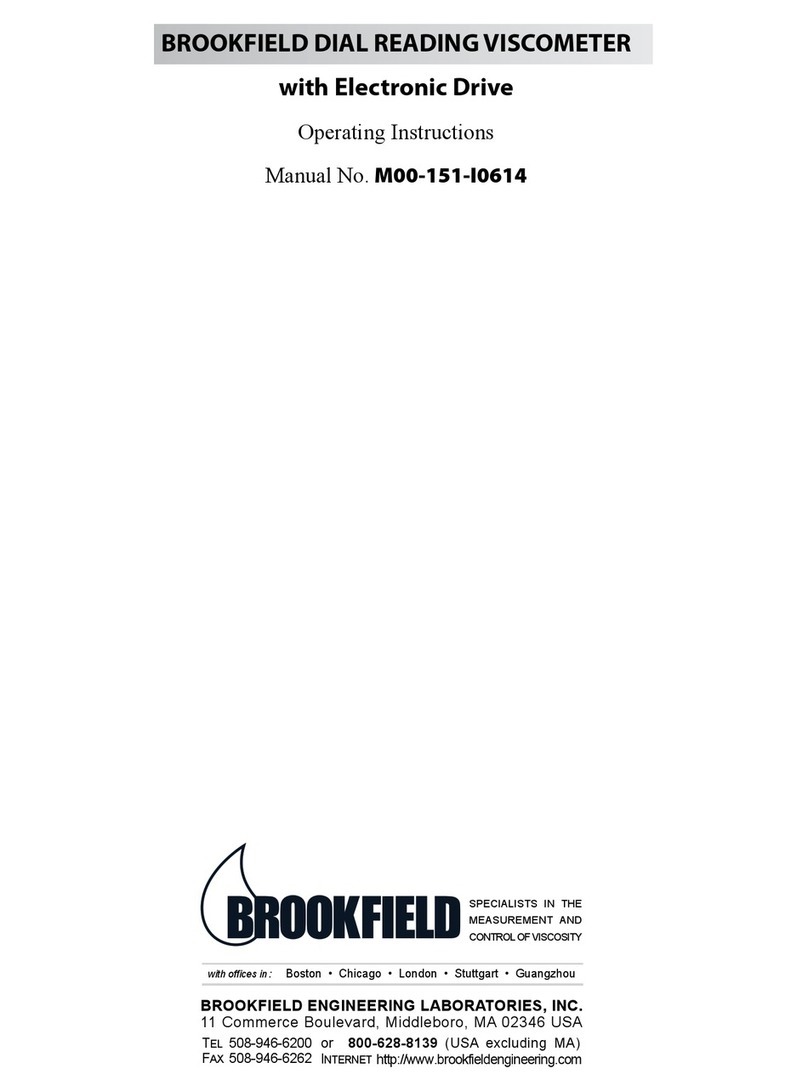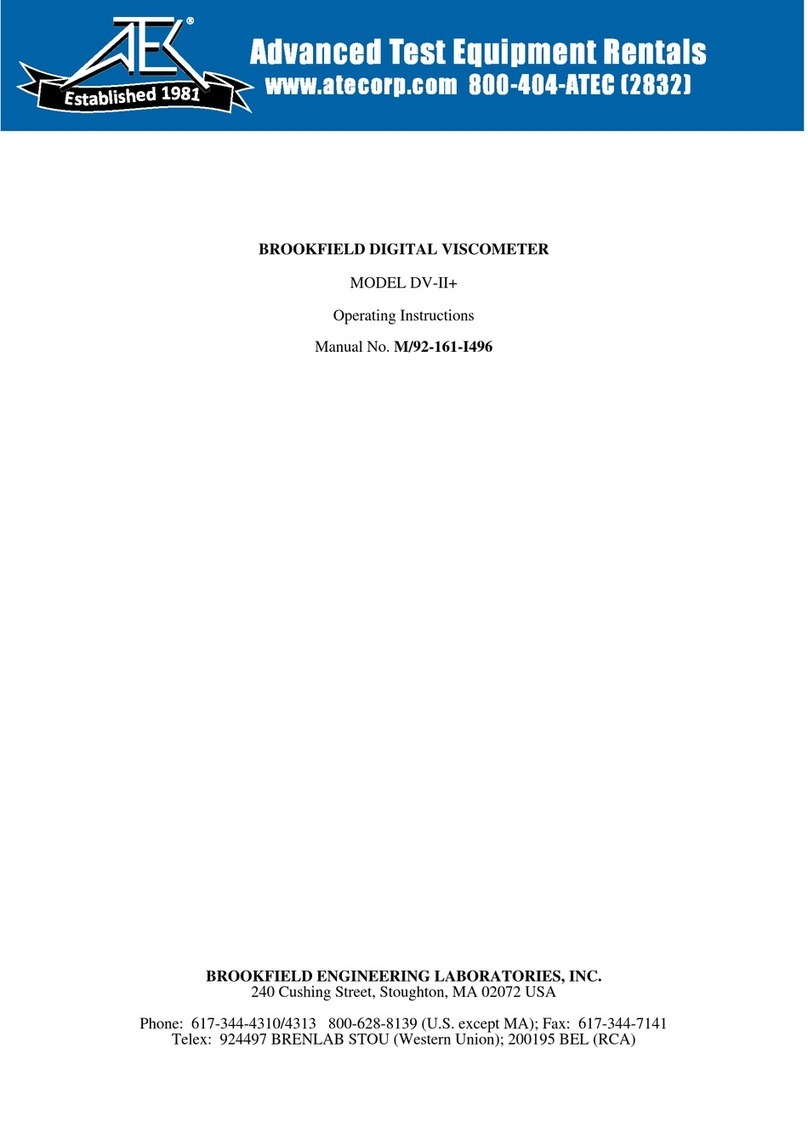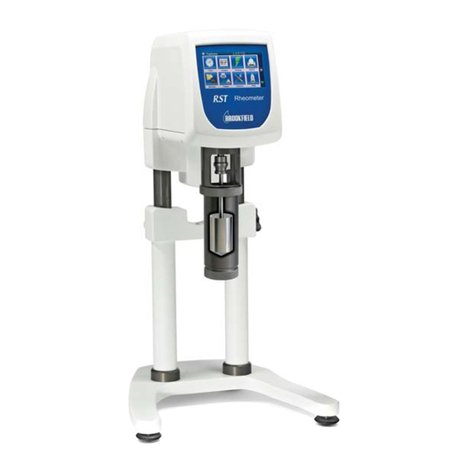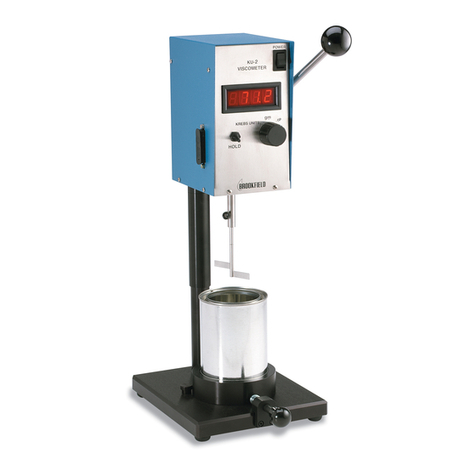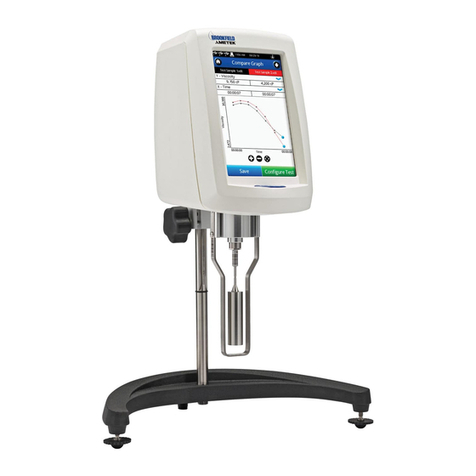
Brookfield Engineering Labs., Inc. Page 2 Manual No. M02-312
TABLE OF CONTENTS
I. INTRODUCTION .......................................................................................................... 3
I.1 Components....................................................................................................... 3
I.2 Utilities ............................................................................................................... 4
I.3 Specifications..................................................................................................... 4
I.4 Installation.......................................................................................................... 5
I.5 Safety Symbols and Precautions ....................................................................... 5
I.6 Key Functions .................................................................................................... 6
I.7 Viscosity and Temperature Display.................................................................... 6
I.8 Cleaning............................................................................................................. 7
II. GETTING STARTED .................................................................................................... 8
II.1 Power ON.......................................................................................................... 8
II.2 Cone Spindle Selection and Setting.................................................................. 8
II.3 Speed Setting.................................................................................................. 10
II.4 Temperature Control Setting ........................................................................... 10
II.5 Hold Time Settings ...........................................................................................11
II.6 Run Time..........................................................................................................11
II.7 Printing .............................................................................................................11
II.8 Run and Stop Keys ......................................................................................... 12
III.OPERATION............................................................................................................... 13
III.1 Accuracy of Measurement ............................................................................... 13
III.2 Repeatability .................................................................................................... 14
III.3 Making Viscosity Measurements ..................................................................... 14
APPENDIX A - Cone Numbers, Sample Sizes, Viscosity Ranges.................................. 17
APPENDIX B - Calibration Procedures........................................................................... 20
APPENDIX C - Variables in Viscosity Measurement ...................................................... 23
APPENDIX D - Warranty Repair and Service ................................................................. 25
ThismanualintendedforusewithCAP1000+seriesviscometerswhich
have serial numbers beginning with a prefix of “CPN”.
CAP1000 and 2000 Viscometers with a serial number prefix of “CP”
require a different manual. Please contact Brookfield or your autho-
rized dealer/representative to obtain this manual.
